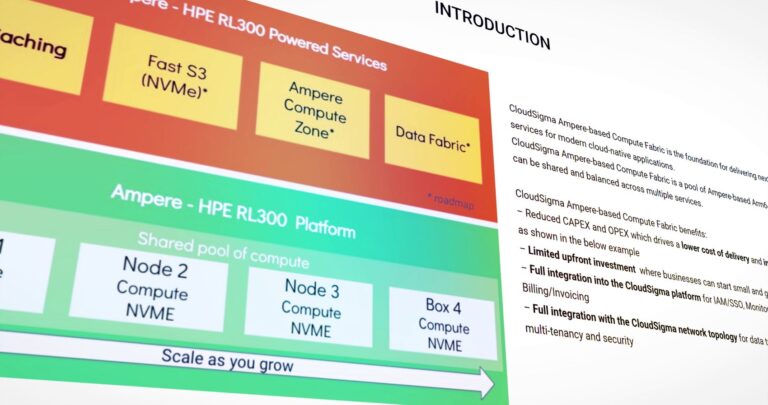Today, it’s not a matter of if your business will be hacked, but when.
The 2024 UK Government Cybersecurity Breaches Survey revealed a startling statistic: 50% of UK businesses suffered a cyberattack or security breach in the previous 12 months, up from 39% in 2022. The average cost of a data breach in 2023 was $4.45 million. For small companies, the impact can be devastating, with an estimated 60 percent going out of business within six months of a cyberattack or data breach.
The alarming state of cyber resilience
The UK National Cybersecurity Centre (NCSC) has highlighted the significant and enduring cyber threats facing the UK in its latest annual review. The report points to the increasing frequency and sophistication of cyber threats, emphasising the need for enhanced cyber resilience across all sectors. This assessment aligns with the UK’s science secretary’s recent warnings about the UK’s urgent need to bolster its cyber defences.
Lessons from recent cyber incidents
The vulnerability of the UK’s cyber infrastructure is not theoretical. The Crowdstrike outage that took down millions of computers reveals how IT and security lapses can have far-reaching consequences.
The rise and rise of ransomware attacks also means that backup and recovery best practices are more important than ever. Service downtime, customer upsets, and corrupted data are just some of the common consequences that arise after a ransomware attack leaves a business offline.
Preparing for the inevitable
Cybersecurity threats are inevitable, making it essential for businesses to prepare for the worst. The critical question is: if your business is hacked, is your data protected, and can you recover it in hours rather than days or weeks? If not, you are leaving your business vulnerable to severe disruptions.
While everyone emphasises the importance of backups, the real challenge lies in ensuring their integrity and recoverability. Are your backups clean? Can you quickly restore data without prolonged downtime? The total cost of ownership (TCO) of your data protection strategy over time is a crucial consideration. Traditional methods, such as relying on Iron Mountain for physical backups, are cumbersome and time-bound, requiring significant effort to locate and restore data.
Right data, right place, right time
The story of data storage, much like the shift to cloud computing, revolves around strategically placing the right parts of your business operations in the most suitable locations at the right times. Data protection follows the same principle. Resilience is still a topic of frequent discussion, yet its broad nature makes it challenging to establish a clear set of best practices. As headlines frequently highlight new victims of cyberattacks, it raises the question: has data protection become more critical than traditional security measures in safeguarding a business’ core assets?
Best practices for building robust data protection
- Adopt zero trust principles
Implement zero trust principles to silo parts of your technology stack. This approach limits access to only those who need it and continually verifies each user and device. By segmenting your network and enforcing strict access controls, you can blunt the spread of infections and slow down the lateral movement of ransomware. This means that even if one part of your network is compromised, the rest remains secure, reducing the potential impact of an attack.
2. Use smart data backups
Use data backups strategically to secure your business’s critical workloads. Regularly back up your data and store copies in multiple locations, including off-site and in the cloud. Ensure that these backups are encrypted and protected by strong access controls. By having reliable backups, you can quickly restore data in the event of a cyberattack or other disaster, minimising downtime and loss.
3. Implement immutable data solutions
Immutable data backups can be leveraged as a defence mechanism. Immutable data ensures that once a backup is created, it cannot be altered or deleted. This provides a safeguard against ransomware attacks and human error, ensuring that you always have a clean copy of your data to restore from. Implementing immutability can significantly enhance your data protection strategy and ensure rapid recovery during a crisis.
4. Conduct regular security tests
Identify critical data, duplicate it, and store it securely. If you have seen this routine backup equation before, you might be missing one of the most important steps. Testing your backups, and ensuring copies are ‘clean’ and recoverable, makes the difference between a rapid recovery and one that’s halted by infected data. Businesses should conduct regular drills and simulations. This helps identify weaknesses and ensures that your team is prepared to respond effectively to real-world threats. Drills should cover various scenarios, including ransomware attacks, data breaches, and other common cyber incidents.
5. Prepare for advanced threats
As cybercriminals increasingly target backup systems, it is essential to secure these systems with the same rigor as your primary data. Strengthen traditional backup and recovery systems against targeted attacks by using advanced malware protection and regular security audits to identify and mitigate vulnerabilities in your backup infrastructure. This proactive approach helps protect your safety net from being breached by attackers.
6. Increase your cyber hygiene
Focus on policies that promote good cyber hygiene and clean data practices. Educate employees about the importance of cybersecurity and best practices for protecting data. Regular training sessions can help reinforce the need for strong passwords, phishing awareness, and secure handling of sensitive information. A culture of cybersecurity awareness is essential for maintaining robust data protection.
7. Plan for business continuity
Integrate data protection into your business continuity and disaster recovery plans to outline how your business will maintain operations during and after a cyberattack. These plans should include detailed procedures for data recovery, communication strategies, and roles and responsibilities. Again, regularly update and test your plans to ensure they remain effective and relevant.
8. Integrate data protection with emerging technologies
Data protection has become the backbone of other technologies, such as public cloud, storage, and AI. As businesses increasingly rely on these technologies, robust data protection becomes even more critical. Ensuring that data protection measures are integrated with these technologies will enhance resilience and minimise downtime.
Invest in data protection to save the cost of a data breach
Investment in robust data protection measures is minimal compared to the potential cost of data loss. The average cost of a data breach is significant, but the long-term impact on a business’ reputation and customer trust can be even more damaging. Investing in data protection not only safeguards against financial loss but also enhances business continuity and resilience.
About the Author

Ishwar Fernandes has 20 Years of experience as a Senior Solutions Architect, currently holding the position of Head of Technical Architects at CSI Ltd.
Ishwar has implemented some of the most complex IT Infrastructures for HPC (Active-Active) Solutions (AI & ML) with Storage Scale (GPFS), IBM Fusion (HCI), Containers, Redhat Ceph which also include Multi Cloud Solutions and helping customers in their quest for pure unbiased Digital Transformation.


